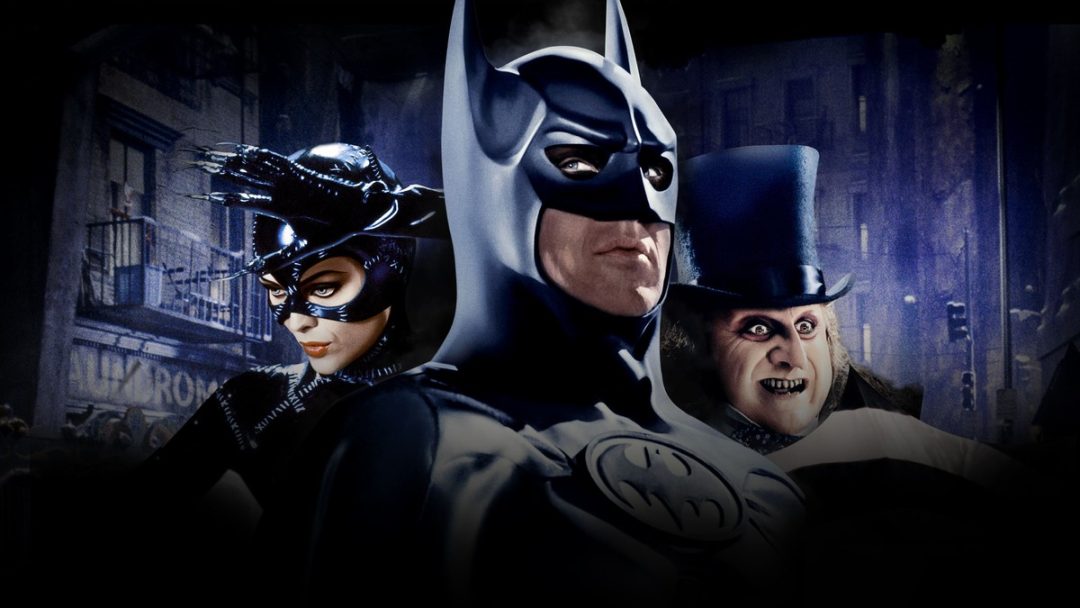Batman Returns, a polarizing sequel in the Caped Crusader’s cinematic legacy. Released in 1992 and directed again by Tim Burton, it steps further into Burton’s surreal Gotham City and offers a darker, more twisted narrative compared to its predecessor. However, at times it is a bit more lighthearted with its comedy. Its strengths are not as fleshed out as the first movie, and any weaknesses are much more present, as is usually the way with sequels. It does hold a unique place in the Batman cinematic universe.
I remember watching this as a young lad in the theaters and ironically, didn’t really care for it all that much. I liked it, of course, but it wasn’t anything like the first movie. It was off a bit, missing something. I would still watch it from time to time and now, over the past few years, it’s become a mainstay for me during Christmas time. A part of it might be nostalgia, but a part of it is finally coming to terms with it and enjoying it for what it is.
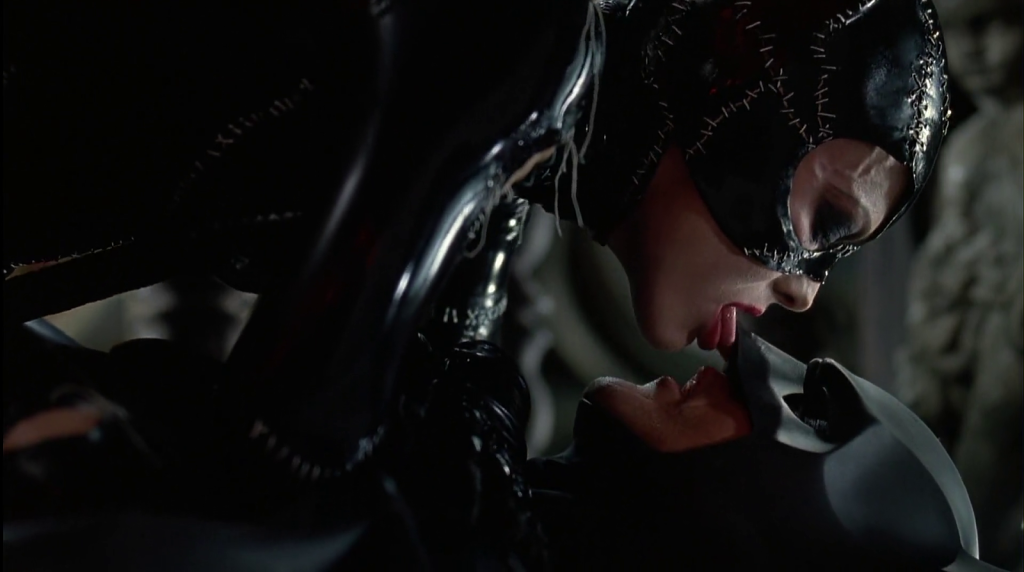
Batman Returns takes a bold step into darker thematic territory compared to its predecessor. It explores themes of alienation, duality, and societal rejection through its characters, especially with the tragic backstories of both Catwoman and Penguin. However, the film struggles to balance its multiple storylines, often feeling disjointed and lacking cohesion.
The plot involving Penguin’s mayoral campaign, Shreck’s corrupt dealings, and Catwoman’s personal vendetta sometimes feels convoluted, causing the film to lose focus on Batman’s central conflict. The attempt to interweave these narratives results in a lack of a clear, singular direction, making the film feel overstuffed and occasionally meandering.
This is most notable in the two ending sequences that peter out and go nowhere. One involving the kidnapping of children and the other revolving around penguins with rockets strapped to their backs. Batman is hardly even mentioned during this time and yet both scenarios are thwarted with ease.
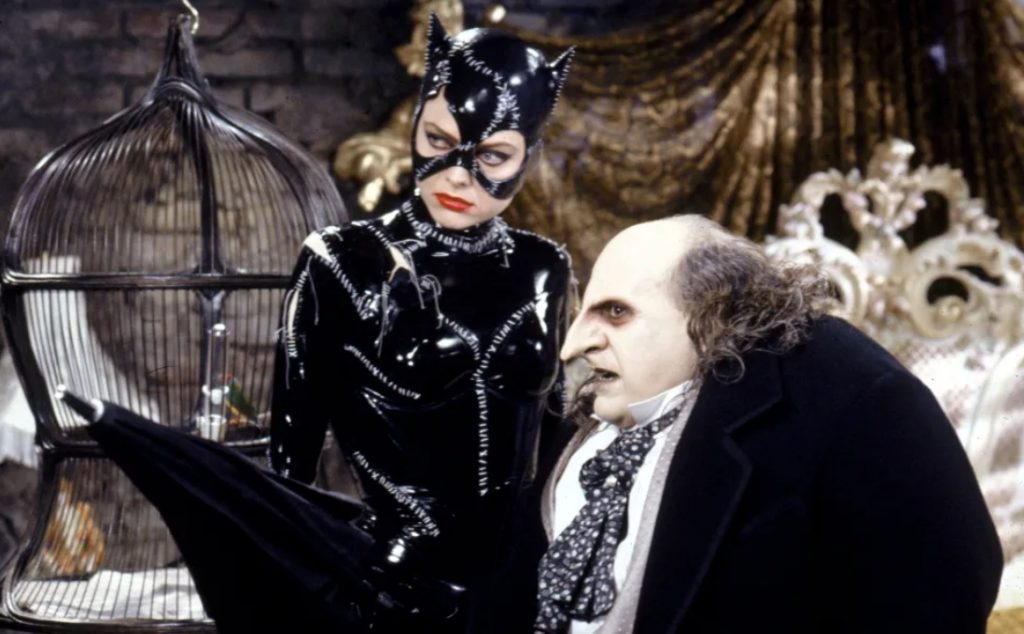
At the forefront, Michael Keaton reprises his role as Bruce Wayne/Batman, delivering a brooding and complex portrayal that captures the tormented duality of the character. Keaton’s Batman remains a standout, portraying both the enigmatic hero and the haunted individual behind the mask with depth and conviction. Keaton is also able to stretch-out his comedic legs for the character with a bit of his humor, something that was all but missing in the first movie.
Michelle Pfeiffer’s portrayal of Selina Kyle/Catwoman is a highlight of the film. Her transformation from the timid secretary to the seductive and vengeful anti-heroine is captivating. Pfeiffer brings a fierce intensity to the character, showcasing her conflicted nature and adding layers of depth to the film. I think the character of Selina Kyle has been done better in other mediums and movies, but as Catwoman, Pfeiffer’s performance is one of the greatest if not the greatest. There’s an obvious hint of feminism, but nothing shoved down your throat.
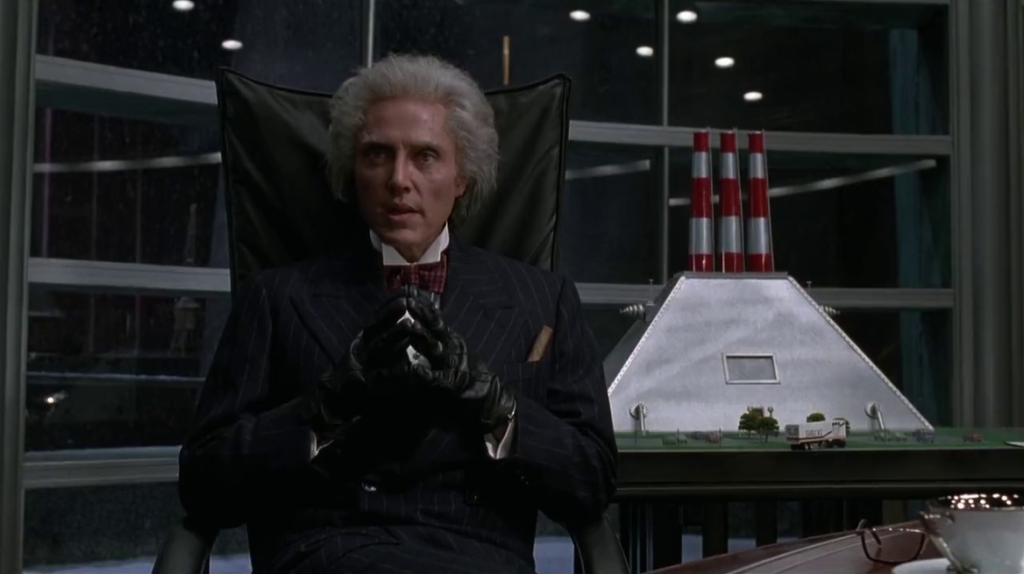
The movie’s villains Oswald Cobblepot/The Penguin (Danny DeVito) and Max Shreck (Christopher Walken), fall into the trap of caricature at times. DeVito’s Penguin, while grotesquely fascinating, occasionally veers into over-the-top territory making it difficult to take the character seriously. Walken’s Shreck, though suave and menacing, lacks depth but truly remains to be a memorable antagonist. I chalk that up to Walken’s performance more than anything else. He was just missing the curled mustache to twist while laughing maniacally.
Burton’s fingerprints are loud and clear this time around. He was allowed a lot more creative freedom. The first movie was dark, yet more steampunk throughout Gotham City. Here it’s much more dark and gothic, much like other works from Burton.
His visual flair is evident throughout Batman Returns. The cinematography captures the surreal and atmospheric essence of Gotham City, utilizing shadows, contrasts, and a distinct color palette to immerse viewers in Burton’s dark, fantastical world. The use of practical effects, combined with Burton’s penchant for the bizarre, crafts a visually stunning yet hauntingly beautiful film.

Burton’s vision of Gotham City remains unparalleled in its gothic, macabre charm. Batman Returns brings viewers deeper into this world, enveloping them in a visually stunning yet grim atmosphere. The production design amplifies Burton’s signature style, with towering Gothic architecture, snow-covered streets, and an eerie, somewhat fairytale-like aesthetic. Gotham City becomes a character itself, embodying the dark and twisted nature of the narrative.
Batman Returns remains an ambitious sequel that pushed the boundaries of the superhero genre. Tim Burton’s distinctive style and the standout performances from Keaton and Pfeiffer elevate the film. The gothic aesthetic, coupled with the exploration of complex character arcs, adds depth to the Batman mythos.
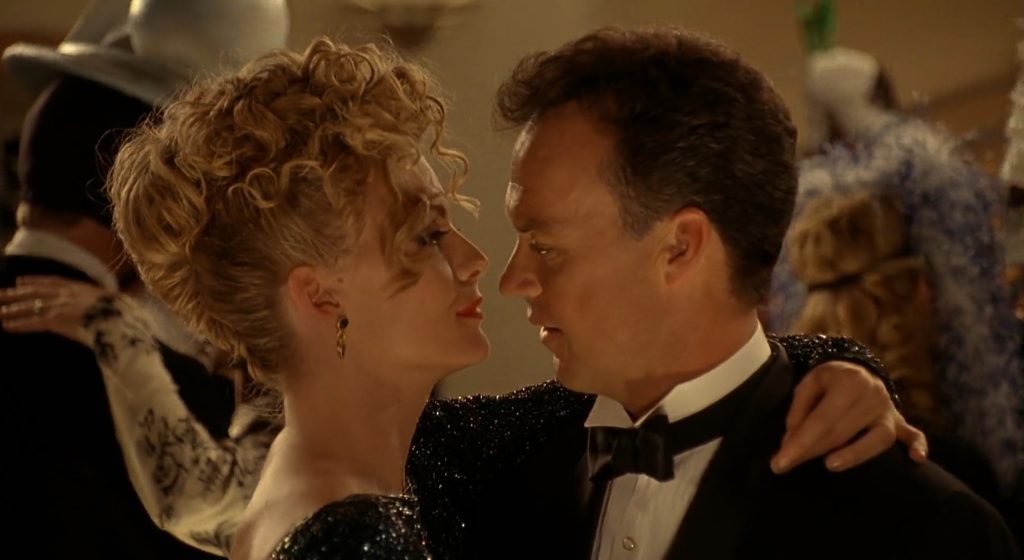
The film’s overabundance of storylines, occasionally exaggerated performances, and a lack of cohesive narrative direction prevent it from reaching its full potential. The movie stands as a visually striking, yet flawed entry in the Batman film series, appealing to fans of Burton’s distinctive vision but leaving others wishing for a more streamlined and focused storyline.
Ultimately, Batman Returns is a testament to Burton’s creative vision and ambition but falls short of being a unanimously celebrated addition to the Batman cinematic canon.

Check back every day for movie news and reviews at the Last Movie Outpost


